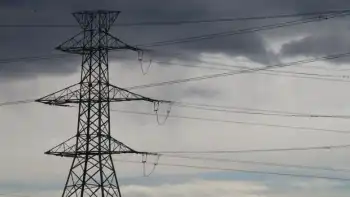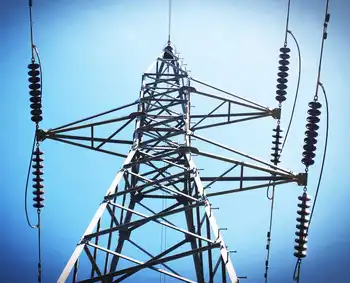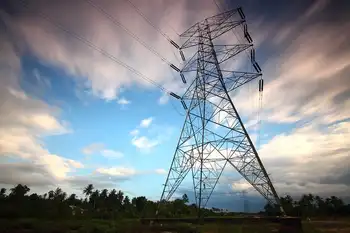Hydroelectric plant closer to reality
By Hazelton Standard-Speaker
Substation Relay Protection Training
Our customized live online or in‑person group training can be delivered to your staff at your location.

- Live Online
- 12 hours Instructor-led
- Group Training Available
Borough Manager Harold Pudliner said the Federal Energy Regulatory Commission has approved a preliminary permit that will allow the borough to conduct a feasibility study for construction of two generating units with the capability of generating 26 gigawatt-hours a year.
"We have three years to complete the study," Pudliner said. "How long it takes will depend upon what we find."
Pudliner said the study will be done by Utility Engineers PC of Drums. One of the principals in the firm, Norm Baron, had worked on the borough's original hydroelectric project a few decades ago.
"The study itself will take about six months, and the biggest element is the environmental assessment," Baron said. "But it has to be reviewed and approved by several government agencies, and that's what takes so much time."
Baron said right now, a search is under way for grants to fund the study, which he estimated between $150,000 and $300,000.
Part of the study, Baron said, will determine how the borough will pay for the project, which will cost millions.
The borough had a similar permit in the 1980s, but did not act on it because the Army Corps of Engineers was anticipating a project to modify the Francis E. Walter Dam — which would have impacted the hydroelectric project.
Whether or not the dam is raised won't impact the hydroelectric project this time.
"The generators would be a little further downstream," Pudliner said. "This time, the Army Corps of Engineers did not offer any comment during the public comment period for the application."
In fact, the only comment came from the U.S. Department of the Interior.
"They were concerned that no endangered species be affected," Pudliner said. "They also gave us an alert to watch out for bald eagles nesting."
Baron said moving the location of the hydroelectric plant is just one change from the original project.
"There have been technical advancements in the type of generation equipment the plant would have," Baron said.
Pudliner also said the technology exists so that if the dam work is done, the project can adjust to it.
"I'm not sure what type of generation the plant would have," Baron said. "It would be based on water releases. It could be modified for future elevations of the dam."
Baron said the location for the hydroelectric plant was chosen for a reason.
"The water storage is there and flows favorable to hydroelectric are there as well," Baron said. "It's close to the Borough of Weatherly, and the electrical facilities are fairly close. Not many dams have these attributes."
George Sauls, the engineer who oversees five dams in Pennsylvania's northern region for the Army Corps of Engineers, said the corps does not oppose the project.
"We don't typically oppose projects like this," Sauls said. "I haven't seen this project yet. We have requirements that have to be met in order to have hydroelectric power at a corps facility."
Both Baron and Pudliner said that ever since the Walter Dam was built in 1961, the Army Corps has had plans to raise it 29 feet but has never acted to expand it.
Sauls said every year since 2005, the Army Corps raises the level of a pool behind the dam, for recreational purposes. But the dam itself has never been raised.
"The Army Corps has relaxed its position because of green energy," Baron said. "They now look favorably to the borough to do it."
Pudliner said the borough would not abandon its present system of purchasing electricity in bulk from PPL, but would sell the electricity generated to PPL.
If the plant is built, Baron said it could possibly pay for itself. But that would depend on the dam's production.
If the dam work is done — and it is 29 feet higher — it will be enable more power to be generated.
Baron estimated that 29 gigawatts of power per year could be generated if the dam is higher.
Pudliner said the borough uses about 21 gigawatts per year. If 26 gigawatts of power was produced, it would be more than the borough uses, so the borough would make money on the deal.











